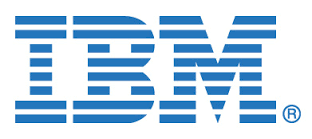Microsoft Power BI for The Associated Press
Categories
Description
The Associated Press delivers 2017 Virginia gubernatorial primary results with Microsoft Power BI publish to web.
For more than 170 years, The Associated Press (AP) has told the world’s biggest and most important stories, from the assassination of Abraham Lincoln to the fall of the Berlin Wall, and more recently Brexit and the 2016 U.S. presidential election.
Today, when news is frequently accompanied by massive quantities of data, reporting means making sense of all that data, and AP continues to lead the way in data journalism. The news agency, with locations in more than 100 countries, provides newsrooms worldwide with data-driven reporting on everything from politics, business, environmental science and public safety to sports, education and more. Recent AP data journalism efforts uncovered water quality issues in public and private water systems, analyzed the history of refugees from the seven countries included in President Trump’s proposed travel ban and revealed the money and politics behind the opioid epidemic.
That’s why today, the AP and Microsoft are excited to announce that AP will use Microsoft Power BI, a powerful data analytics and visualization tool, to expand the way AP shares data with its member news organizations and customers. The pilot program will enable local and regional news outlets to more easily uncover and report the data-driven local stories most interesting to their audiences through AP’s use of Power BI.
AP regularly provides robust, deeply researched and credible raw data to its members and customers and knows that they have a huge appetite for local angles available in the AP data. However, many local and regional news organizations need help transforming that data into easily digested information that’s pertinent to their audiences.
The AP’s water quality data set is a great example of the news agency providing a highly relevant and timely data set to its members. Large and complex data sets that are deeply researched and credible, but not easy to quickly interpret, can present a challenge to news organizations that lack the time, resources and tools to uncover local stories in national or global data.
By including interactive visualizations along with the data, the AP will make it easier for its members and customers to discover local stories and, with just a few clicks, create and publish localized interactive data visualizations to illustrate those stories with Power BI.
Sharing data encourages a greater level of transparency and understanding, but comes with the great responsibility of being accurate, useful, significant and comprehensible. The ability for people, businesses and the media to see and touch data is creating a dramatic change in the way stories are being told and reported. Interactive data visualizations invite readers into the role of a journalist, enabling them to dig deeper and uncover the story that is the most relevant, meaningful and personal to them.
In a recent release from the AP about the new data journalism section in the AP Stylebook, the AP wrote, “Data journalism has become a staple of reporting across beats and platforms, no longer reserved for specialists. Government agencies, businesses and other organizations all communicate in the language of data and statistics. To cover them, journalists must become conversant in that language.”
The end goal is to help create data stories that are more relevant to readers. This increased engagement will enable readers to benefit from the interactive data visualizations by being able to discover their own findings and explore insights pertinent to their markets.
“The collaboration with Microsoft to enhance our data journalism efforts with Power BI helps take data storytelling to the next level,” said Troy Thibodeaux, AP data journalism team editor.
“At The Associated Press, we’ve always been forward-thinking about the role data plays in journalism. Including interactive data visualizations with the data we provide our members and publishing the new section on data journalism in this year’s AP Stylebook are just two examples of ways we’re making data journalism more accessible and efficient for our members and customers, ultimately helping us all better understand the world in which we live.”
Additionally, yesterday we unveiled use of Power BI by the AP for AP member news outlets like WTOP to enhance its coverage of the hotly contested Virginia gubernatorial primary election. With a history of election night accuracy dating to 1848, the world counts on AP to deliver up-to-the-minute results.
By leveraging Power BI to showcase AP election data, we were able to create compelling and interactive data visualizations of yesterday’s election results. Interested news organizations were provided with easy-to-interpret, publishable charts and maps, such as an interactive map of Virginia subdivided by county. AP member news outlets published these data visualizations, helping audiences track and more easily understand the Democratic and Republican races for governor, right down to the results from counties of greatest interest to them.
We are excited to be in the trenches with The Associated Press to enhance the significant adoption of data storytelling in an impactful way.
Details
Business tasks
Reduce Costs
Enhance Staff Productivity
Reduce Production Timelines
Ensure Compliance
Problems
Decentralized IT systems





















